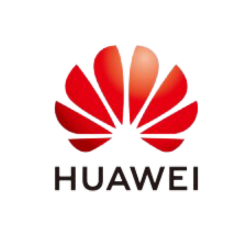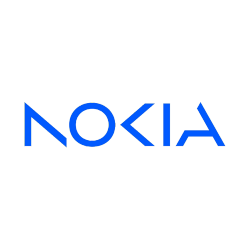
Introduction to Samsung Vodafone 360 H1
The Samsung Vodafone 360 H1, announced in September 2009 and released in November of the same year, was a collaborative effort between Samsung and Vodafone. It was introduced as a part of Vodafone’s new service platform, “Vodafone 360”, which aimed to integrate social media, contacts, and multimedia in a cohesive user experience. At the time, this device was seen as a contender in the rapidly growing smartphone market.
Design and Build Quality
The Vodafone 360 H1 sports a sleek and modern design characterized by its compact dimensions, measuring 115.9 x 58 x 12.9 mm and weighing 134 g. The phone feels solid in hand with a robust build quality, featuring a choice of colors in Black and Silver. Its design simplicity was aesthetically appealing during its time, particularly with its smooth edges and minimalistic button layout.
Display Features
One of the standout features of the Samsung Vodafone 360 H1 is its 3.5-inch AMOLED display, a technology that, at the time, was known for vibrant colors and deep blacks. The resolution stands at 480 x 800 pixels, providing a pixel density of approximately 267 ppi, making it suitable for multimedia consumption and web browsing. Though the screen-to-body ratio of ~51.9% may seem low by today's standards, it was quite impressive in 2009.
Performance and Software
Under the hood, the Vodafone 360 H1 is powered by a 600 MHz Cortex-A8 processor and a PowerVR SGX GPU, which were adequate for handling the LiMo OS, a Linux-based operating system. This software choice was unique compared to the more prevalent Android OS at the time. The device's 16GB internal storage was considered generous for its period, with the option to expand via a microSDHC card slot, making it flexible in terms of storage solutions.
Camera Capabilities
The Vodafone 360 H1 was equipped with a 5 MP rear camera with autofocus and LED flash, capable of shooting video at 720p@30fps. This was a fair offering for users looking for decent photography options in a mobile device. While there was a front-facing camera available for selfies, the specifications for its video recording capabilities were sparse, yet it served its basic function for casual user needs.
Connectivity and Network Support
Connectivity features in the Vodafone 360 H1 included GSM/HSPA technology, supporting 2G and 3G bands, making it compatible with most global carriers at the time. Further enhancing its connectivity options, the phone was equipped with Wi-Fi 802.11 b/g, Bluetooth 2.0 with A2DP, and USB 2.0, covering the essential needs for connectivity interfaces. The inclusion of GPS and A-GPS supported location services effectively.
Audio and Multimedia
Audio playback was well served with a loudspeaker and a standard 3.5mm headphone jack, allowing users to enjoy music directly or through a wide range of audio accessories. For radio enthusiasts, a stereo FM radio with RDS was also included, providing traditional media options alongside digital content.
Battery Life and Efficiency
The device was powered by a removable Li-Ion 1500 mAh battery, which offered up to 460 hours of standby time and around 10 hours of talk time on a 2G connection. For 3G networks, the talk time reduced to approximately 6 hours and 40 minutes. Thus, it provided satisfactory battery life for day-to-day use, especially considering the performance needs of the installed software and hardware.
Conclusion
The Samsung Vodafone 360 H1 was a product of its time, combining decent hardware with a new software approach through Vodafone's unique platform. While not the most powerful device on the market, it provided a holistic and user-centric approach to mobile communication and media consumption. Its contribution to the evolving smartphone landscape was highlighted by its forward-thinking features, making it a memorable device in the transitional era of early smartphone technology.
Key Features of Samsung Vodafone 360 H1
- AMOLED display with 3.5 inches screen size for vibrant visuals.
- 16GB of internal storage for ample file and app space.
- 5 MP main camera with autofocus and LED flash for quality photos.
- 720p video recording capability.
- Powered by 600 MHz Cortex-A8 processor and PowerVR SGX GPU for smooth performance.
- Wi-Fi and Bluetooth 2.0 for versatile connectivity options.
- GPS support with A-GPS for accurate location services.
- Stereo FM radio with RDS for on-the-go music and news.
- Removable 1500 mAh battery with up to 460 hours of standby time.
- Available in Black and Silver colors.
Disadvantages of Samsung Vodafone 360 H1
- The operating system is LiMo OS, which has limited app support compared to more popular operating systems like Android or iOS.
- The speed of the processor is only 600 MHz, which may lead to slower performance when handling multiple tasks or running resource-intensive applications.
- The phone is discontinued, so it may not receive software updates or support.
- The screen-to-body ratio is relatively low (~51.9%), resulting in thicker bezels compared to modern smartphones.
- Lacks advanced sensors like accelerometer, gyroscope, proximity, and compass, which are standard in newer phones.
- 3G network support is limited to the HSDPA 2100 band only.
- The VGA selfie camera has no specific features or enhancements.
- The device uses Bluetooth 2.0, which provides slower data transfer rates and lower range compared to newer versions of Bluetooth.


View Also
More Phones
All Rights Reserved +14266 Phones © Mobilawy 2025

























